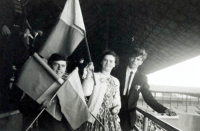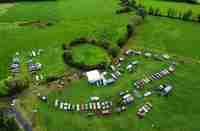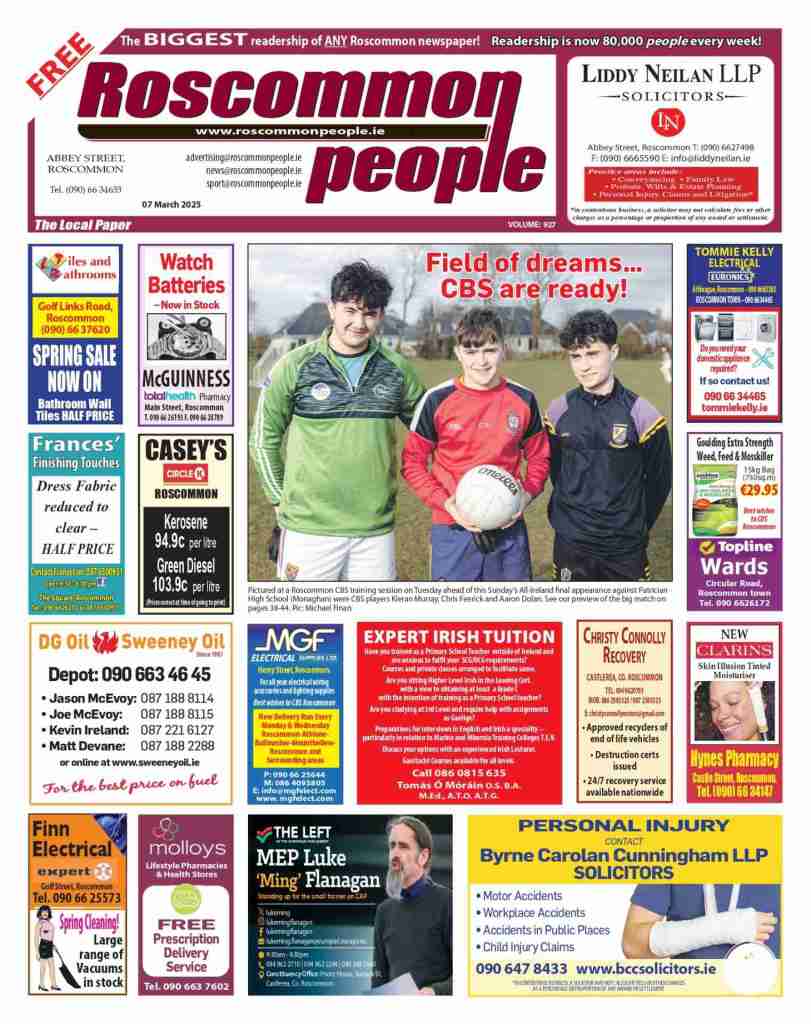 Birth of a legend
Birth of a legend
‘The lad from Whitehall looked as carefree as if playing on a beach. The Soviet midfielders didn’t look so happy; indeed they resembled hens that had suddenly found a cub in their midst. John Keats wished that his first book of poems would explode upon the world: it didn’t so much as get a single review. I doubt if Liam Brady harboured any such ambition, but on that grey, windy afternoon long ago, he most certainly exploded on to the football world’
– Con Houlihan on Liam Brady’s international debut in 1974, when the teenager inspired the Republic of Ireland to a 3-0 win over the Soviet Union in Dalymount Park
I had been planning to write about someone else this week – then we ran out of milk.
As I drove to the shop last Sunday, I was joined by Joe Molloy and John Barnes. On Off the Ball on Newstalk, the host (Molloy) could hardly get a word in with Barnes, the former Watford, Liverpool and England great. But that was fine. Barnes is a fascinating interviewee. You could listen to his cogent, intelligent, fair-minded arguments all day long (but I was only going for the milk).
Still, the milk could wait. I stayed in the car for half an hour or so, entertained, intrigued and educated by genial John…Joe and I hanging on to every word. Barnes is the antithesis of the stereotype (if it still exists) of the Footballer With Nothing to Say. John is fascinating, brilliant, now an established and much-in-demand pundit, commentator, campaigner and public speaker. It was good radio.
Outside the shop, two men observed social distancing as they leaned against a car, ice cream cones in hand (flakes and all). Just as I was about to get out of my vehicle, John Barnes, unprompted, and without any sense that he was deliberately appealing to an Irish radio audience, made reference to a player who had greatly influenced him.
“…My favourite player ever – and I know it’s not Britain because it’s the Republic of Ireland – was Liam Brady. He is the greatest player from this part of the world, ever”.
That’s what John Barnes said – and he meant it. (He’s far too thoughtful and intelligent to bother with the business of trying to curry favour with an audience). He mentioned Brady only in passing, as part of a typically nuanced answer to a question about a perception that Barnes had not realised his full potential in an England shirt. But he said it, and he meant it…bypassing Paul Gascoigne, Glenn Hoddle, Thierry Henry, Ryan Giggs, Cristiano Ronaldo…the lot.
‘Liam Brady…the greatest player from this part of the world, ever’.
After I’d bought the milk – and a 99 Flake – I was tempted to share the good news with the two men leaning against the car in the gentle summer sunshine.
Brady was, of course, always on my ‘Heroes’ list – John Barnes has just brought him forward.
Long before Liam Brady became one of the Three Wise Men of soccer punditry, he had another life…as a wizard in football boots. Brady left his native Dublin to join Arsenal as a shy 15-year-old in 1971. Making his first team debut in 1973, he soon became a fans’ favourite, renowned for his magical left foot. A superb passer of the ball, Brady was an attacking midfielder, an old-style dribbler. He scored many superb goals, including a Goal of the Season contender against Spurs (see YouTube). Playing with the joy and carefree innocence of a boy expressing himself in the schoolyard, he was Arsenal’s cultured playmaker. He went on to conquer Italy too. The brilliant international career which began with such joy in ’74 ended in some sorrow, through no fault of Brady’s. Jack Charlton was talking the plain prose of ‘putting them under pressure’; there was no space for Liam Brady’s poetry.
‘For a year I had lived with the possibility of Liam Brady’s transfer to another club in the same way that, in the late fifties and early sixties, American teenagers had lived with the possibility of the impending Apocalypse. I knew it would happen, yet, even so, I allowed myself to hope; I fretted about it daily, read all the papers scrupulously for hints that he might sign a new contract, studied his onfield relationship with the other players at the club carefully in case it revealed signs of bonds too strong to be broken. I had never felt so intensely about an Arsenal player; for five years he was the focus of the team, and therefore the centre of a very important part of myself, and the consciousness of his rumoured desire to leave Arsenal was always with me, a small shadow on any X-ray of my wellbeing…
‘Liam Brady was one of the best two or three passers of the last twenty years, and this in itself was why he was revered by every single Arsenal fan, but for me there was more to it than that. I worshipped him because he was great, and I worshipped him because, in the parlance, if you cut him he would bleed Arsenal; but there was a third thing too. He was intelligent. This intelligence manifested itself primarily in his passing, which was incisive and imaginative and constantly surprising’.
– From ‘Fever Pitch’ (1992) by Nick Hornby
The Liam Brady final
May 1979, and in Rooskey, a major crisis was unfolding. George Latimer was a genial man, but by now, he had our TV for the best part of two weeks. When our television broke down, my father had dropped it off with George, the TV repair man in Mohill. Several days passed. No word from George. No sound, and certainly no vision. And the FA Cup final was imminent. Arsenal against Manchester United, a glamour pairing, with particular Irish interest.
Thank God (and George), calamity was avoided. My father, briefed on the enormity of what was at stake, made another foray into Mohill, this time returning with the repaired television, just minutes before kick-off in the FA Cup Final.
Inspired by Liam Brady’s dribbling skills and vision, Arsenal went 2-0 up. The ending raised an ordinary game to classic status. Gordon McQueen scrambled in an 86th minute goal, then Sammy McIlroy equalised two minutes later. Advantage United.
Liam Brady had one more arrow in his quiver. As despondent Arsenal teammates wilted around him, Brady made one final penetrating run, pushing the ball wide to Graham Rix. An inviting deep cross, and Alan Sunderland stretches to connect at the far post. John Motson (in commentary): “It’s there! 3-2! Arsenal are back in front, through Alan Sunderland!” It was Arsenal’s cup – and Liam Brady’s final.
Around this time, a Sunday newspaper reported that Leeds United (the club I supported then and now) were poised to bid 200,000 pounds’ sterling to buy Brady! The headline quoted a source as saying that the Leeds players were prepared to walk to London to get their man. Leeds never got Liam Brady, but he was on the move. In 1980, he went to Italy, joining Juventus, with whom he won two Serie A titles, before going on to further success with other Italian clubs. To this day, his name is revered by many of those who saw him play in Italy. Brady returned to English football in 1987, joining West Ham. In his last ever game, he scored a superb goal (it’s on YouTube), the ecstatic home fans invading the pitch in celebration.
‘As Ireland made an unspectacular start to the campaign for Italia ’90 there were calls for Brady to again be given a central role. Charlton found the criticism irksome.‘What Brady can’t do at 33 is give me 90 minutes of football at a pace and work rate our style demands,’ he said. Brady, normally loath to make comments to the press, snapped back: ‘I don’t like stupid quotes like that’ he said. ‘I take exception to those remarks’. Charlton carefully chose his moment to strike against Brady’
– From ‘The Team That Jack Built’ (1994) by Paul Rowan
Under Jack Charlton, Ireland qualified for the 1988 European Championships and the World Cups of 1990 and ’94. Fate would not smile on Brady however. He was superb during the 1988 qualification campaign, only to miss out on the finals due to a combination of injury and suspension. In 1990, Charlton (as detailed in Rowan’s book) effectively dispensed with Brady. Riled by pressure from media and fans, Charlton started Brady in Ireland’s last friendly before the World Cup, against Germany in Dublin. The manager then ruthlessly substituted Brady after half an hour, later inferring (perhaps correctly) that this was one hero who was past his best. ‘Brady remonstrated with Charlton in the dressing room’ wrote Rowan, ‘telling him he had been humiliated by being replaced so early and it could have waited till half-time…in the hotel afterwards, Brady announced his retirement from international football’.
It was sad that the majestic Brady was destined to miss out on Ireland’s greatest days. Ireland wouldn’t have made history by getting to the Euro ’88 finals were it not for Brady’s consistent brilliance in the qualifying games. Con Houlihan summed it up: ‘The good peasant plants and tends the vine even though he may not be around to drink the wine’.
More than a decade on from that summer’s day in Rooskey when we’d cheered Liam Brady’s Wembley magic, I went to Lansdowne Road for his testimonial match (against Finland). It was 30 years ago this month. Maybe I only had eyes for the star attraction, but I genuinely thought Brady was the best player on the pitch. He may have been in his twilight as a footballer, but he still stood out. Every touch oozed class. He was a joy to watch; all you could do was lament the march of time.
Before the final whistle, he was called off, this time so that he could experience the love of his people. An emotional ovation shook Lansdowne. Then he was gone, back into the embrace of the city from where his wizardry first announced itself to the world. It was sad to see our hero disappear. How he had graced the game. He was the carefree boy who never quite grew up. Liam Brady played the game in real life the way we played in our dreams.






